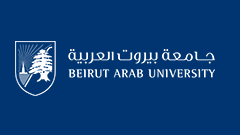Keywords
End odontology, Education, Self-assessment, Rubrics.
Disciplines
Architecture | Business | Life Sciences | Medicine and Health Sciences
Abstract
Teaching of acquired knowledge and professional skills represents a great challenge in various educational disciplines and dentistry is no exception. It is important that we define, instruct, and evaluate competencies so that we can properly prepare our graduates to act independently in dental practice. The aim of this study is to show the evolution of teaching practical endodontology and its effect on the clinical performance of undergraduate dental students through their ability to treat molars before they graduate. In this retrospective observation classes were grouped into 5 groups: I: Students were being taught via the old traditional methods without self-assessment. II: Students were asked to prepare their own rubric system before they come to class. III: students were given the rubric and asked to memorize it before they come to class. IV&V: Student were given the rubric and allowed to keep it while working, do their own self-assessment and grade their work before they ask the instructor to reassess and grade, he will then compare his results with the ones put by the students and give him feedback. The effect of this system on the clinical performance of the students was observed; Groups IV & V had the best results, followed by groups II, I, and III respectively. When students were asked to memorize the rubrics before they start applying showed to be the worst, while giving the chance to the student to follow predefined guidelines then giving him feedback about his performance showed to be the most effective method.
Recommended Citation
ABIAD, ROULA Associate Professor of Endodontics, Faculty of Dentistry,
(2018)
"EVOLUTION OF TEACHING PRACTICAL ENDODONTOLOGY. AFIVE YEARS RETROSPECTIVE STUDY,"
BAU Journal - Health and Wellbeing: Vol. 1:
Iss.
3, Article 46.
DOI: https://doi.org/10.54729/2789-8288.1098
Included in
Architecture Commons, Business Commons, Life Sciences Commons, Medicine and Health Sciences Commons

